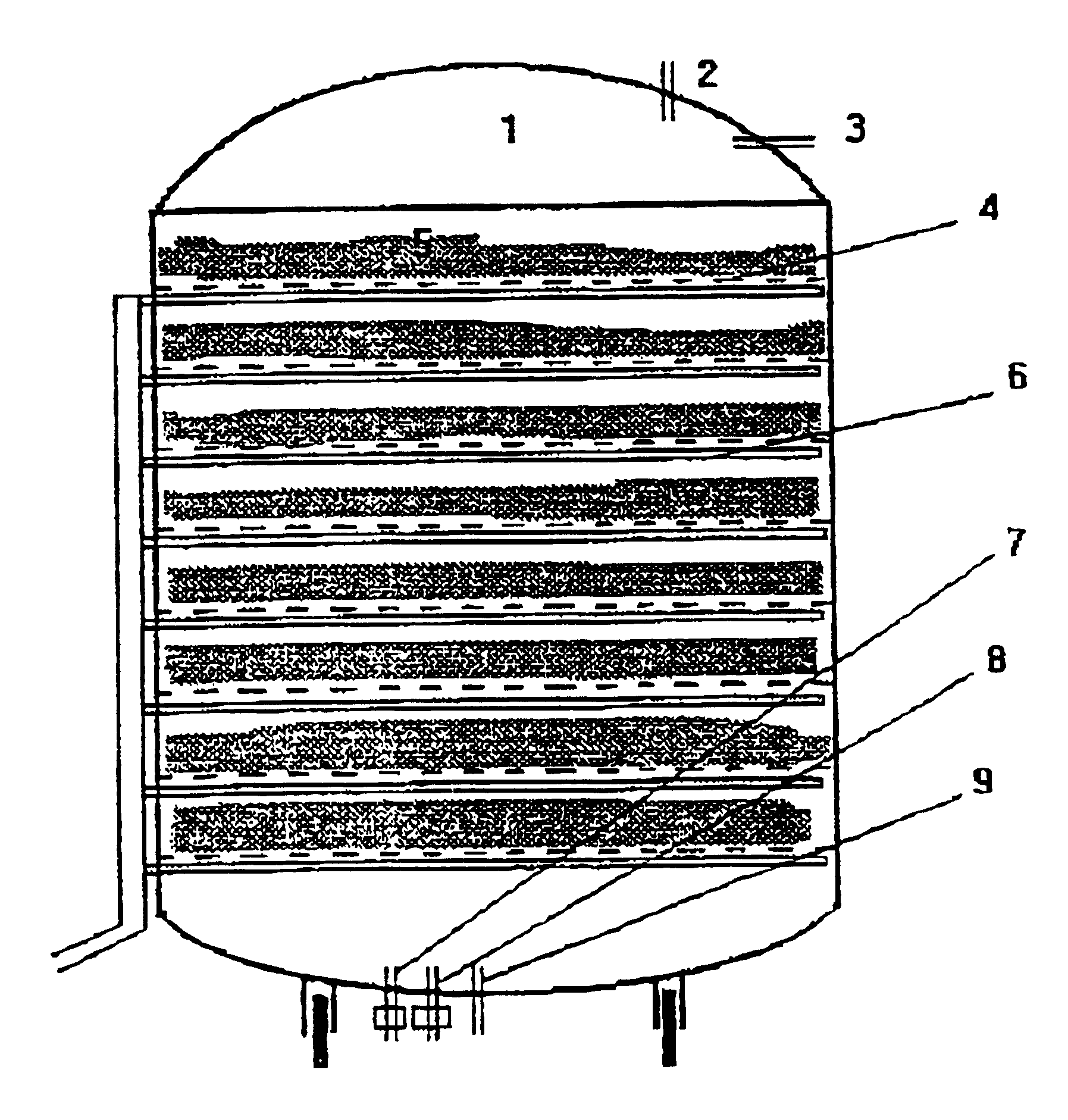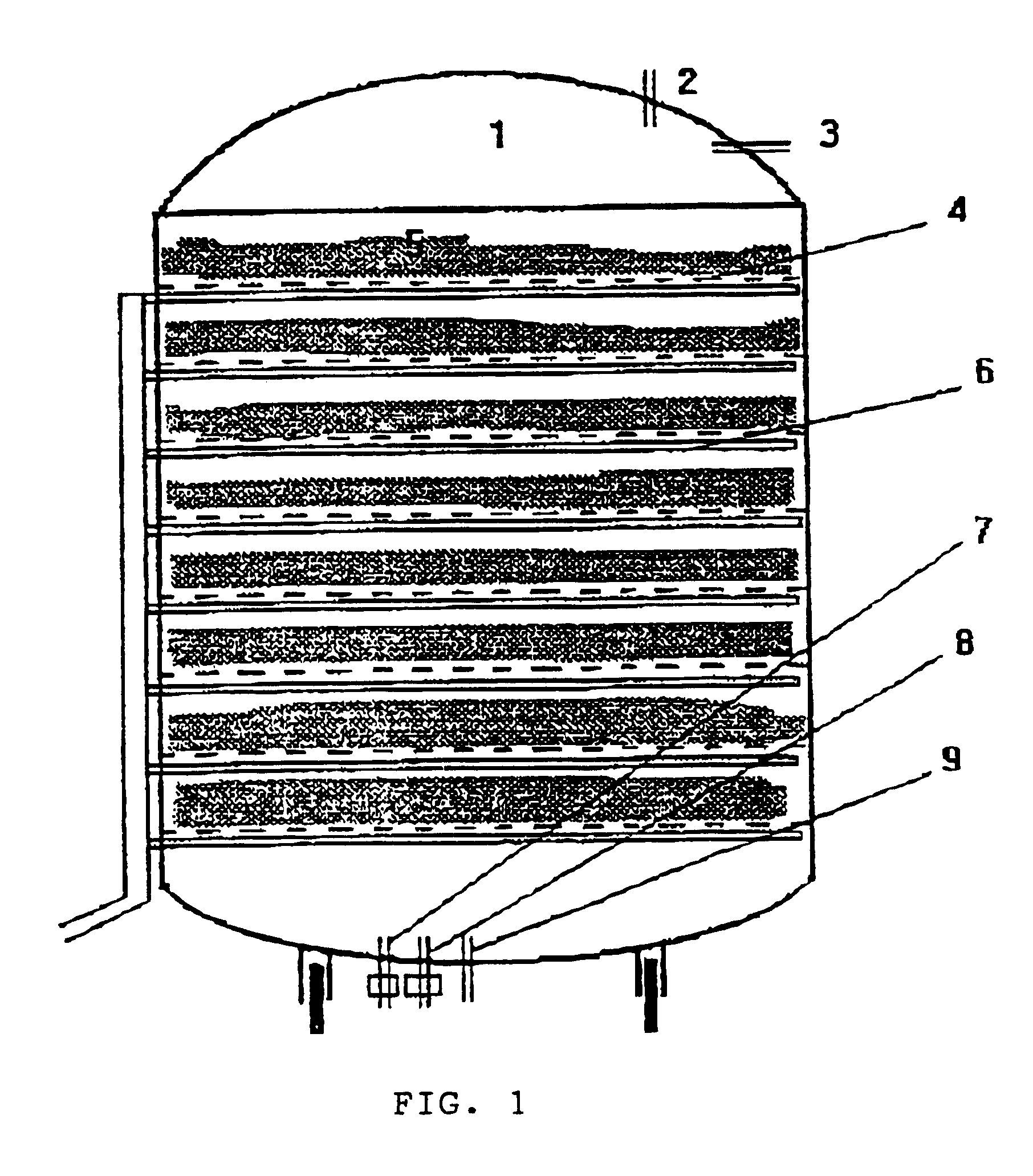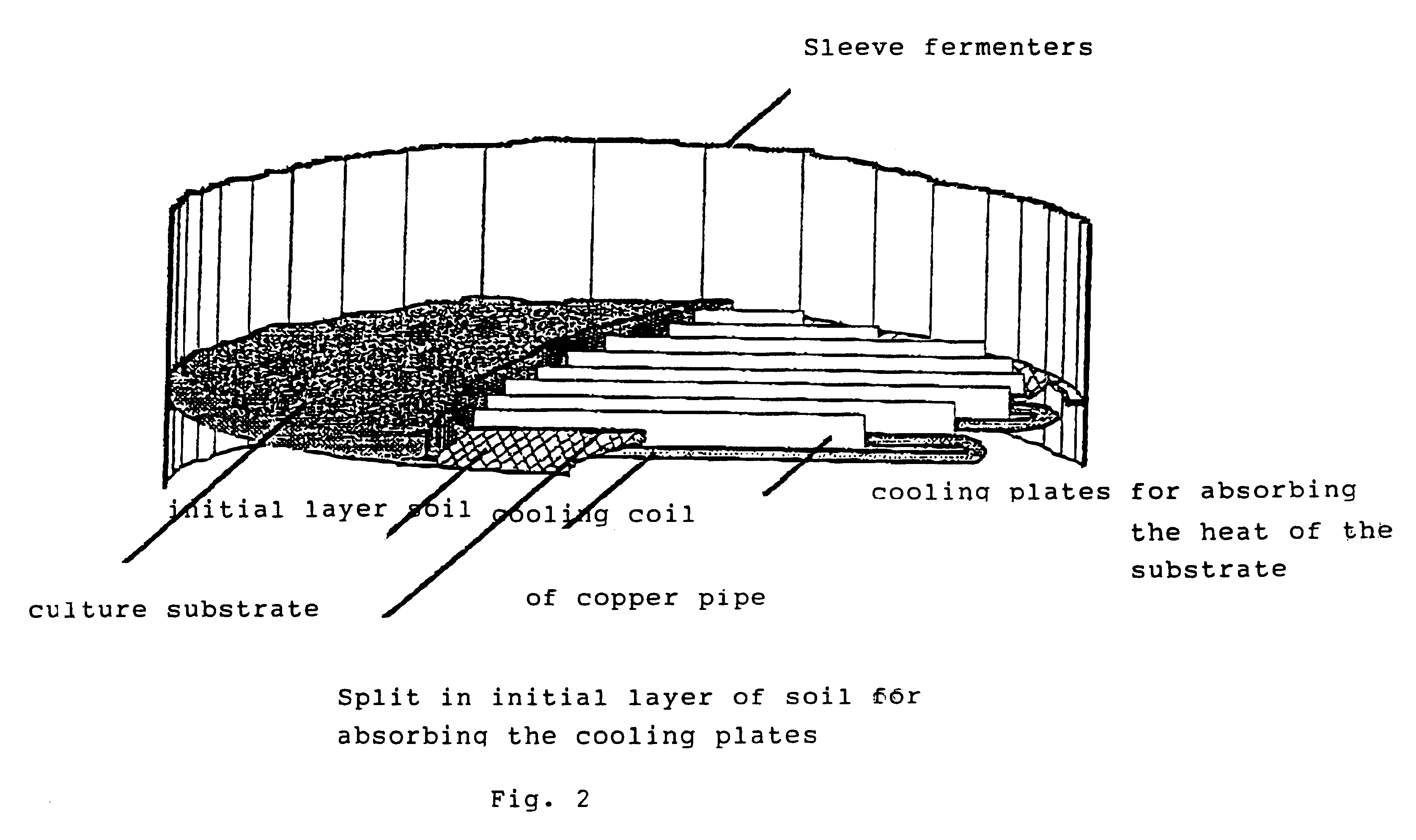Solid-state fermenter and method for solid-state fermentation
- Summary
- Abstract
- Description
- Claims
- Application Information
AI Technical Summary
Problems solved by technology
Method used
Image
Examples
Embodiment Construction
Mass Cultivation of beauveria brongniartii for the Purpose of Yielding Fungal Conidii
The fermenter used for the cultivation of beauveria brogniartii has a capacity of about 50 liters. It has the shape of a cylinder with a diameter of 30 cm and a height of 70 cm. The outer shell of the fermenter is made of heat resistant glass. Eight modules were mounted in the fermenter, whose bottoms consist of a stainless screen with a screen aperture of 3 mm. The distance between the module bases was 8 cm. The lower bottom was filled with a 6 cm thick layer of SERAMIS granulate. The 7 modules arranged above contained crushed barleycorns as cultivation substrate. The layer thickness of the cultivation substrate was approximately 6 cm. In total 30 liters of cultivation substrate were used.
The fermenter was sterilized by an autoclave. For this purpose, the content of the fermenter was heated by hot vapor to 121.degree. C. for a period of half an hour. The lid of the fermenter was slightly opened dur...
PUM
 Login to View More
Login to View More Abstract
Description
Claims
Application Information
 Login to View More
Login to View More - R&D
- Intellectual Property
- Life Sciences
- Materials
- Tech Scout
- Unparalleled Data Quality
- Higher Quality Content
- 60% Fewer Hallucinations
Browse by: Latest US Patents, China's latest patents, Technical Efficacy Thesaurus, Application Domain, Technology Topic, Popular Technical Reports.
© 2025 PatSnap. All rights reserved.Legal|Privacy policy|Modern Slavery Act Transparency Statement|Sitemap|About US| Contact US: help@patsnap.com



